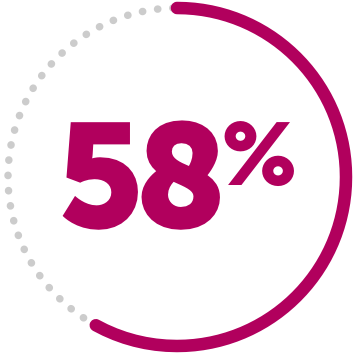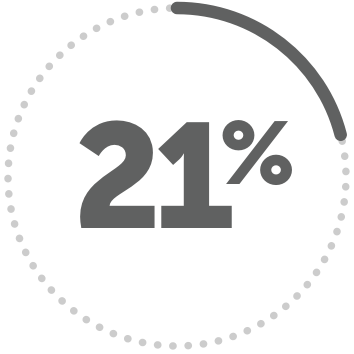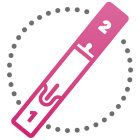of patients on HUMIRA
HUMIRA for
Ankylosing Spondylitis (AS)
What is HUMIRA?
HUMIRA is a prescription medicine used to reduce the signs and symptoms of ankylosing spondylitis (AS) in adults.
HUMIRA Results for Ankylosing Spondylitis
In a clinical study of patients using HUMIRA, some people experienced an improvement in AS back pain and stiffness in only 2 weeks. Most people saw results at 12 weeks. Results may take 12 weeks or longer.
Proven to help reduce the back pain and stiffness of AS.
In a clinical study, after 12 weeks, these are percentages of patients who saw at least a 20% improvement in signs and symptoms of AS.


of patients on placebo
Individual results may vary.
HUMIRA can help improve functional movement.
In a clinical trial, patients were asked to answer multiple questions about their ability to perform everyday activities, like:

Bending forward at the waist

Standing unsupported for 10 minutes

Climbing 12-15 steps without handrail or walking aid

Doing a full day of activities at work or home
Individual results may vary.
Common side effects of HUMIRA
Common side effects of HUMIRA include injection site reactions (pain, redness, rash, swelling,itching, or bruising), upper respiratory infections (sinus infections), headaches, rash, and nausea. These are not all of the possible side effects with HUMIRA. Tell your doctor if you have any side effect that bothers you or that does not go away.
Read about the Important Safety Information for HUMIRA.

HUMIRA Dosing for Ankylosing Spondylitis
It’s important to use proper injection technique and follow the dosing schedule for your treatment with HUMIRA.*
The recommended dose is 40 mg every other week.
Always follow your doctor's instructions about when and how often to take HUMIRA.
HUMIRA is given by an injection under the skin.
Your first dose of HUMIRA must be given under the supervision of a health care professional. Make sure you have been shown how to inject HUMIRA before you do it yourself. Remember to keep your HUMIRA refrigerated in its original container until ready for use.
You should continue taking HUMIRA as directed by your doctor. Remember, HUMIRA is a treatment, not a cure. Your doctor can tell you if and when you should stop taking HUMIRA.
For more information, refer to the Patient Instructions for Use and the Medication Guide located inside the HUMIRA carton, and within the Full Prescribing Information. If you experience any adverse reactions or discomfort when taking HUMIRA, discuss them with your doctor right away.
*Refer to the Patient Instructions for Use to learn about the HUMIRA Pen and prefilled syringe.

Start with support that’s designed around you
HUMIRA Complete gives you access to potential savings, injection training guides, and other helpful resources. Plus, you’re a phone call away from getting help with insurance coverage support.

How does HUMIRA work?
The protein TNF-alpha is believed to be part of your body’s natural processes involved in creating inflammation, and in some cases, excess inflammation. When used as prescribed, HUMIRA targets and blocks TNF-alpha, which can help reduce the excess inflammation associated with AS.
Explore a different ankylosing spondylitis treatment option.
Learn about a once-daily pill for people with ankylosing spondylitis who already tried a TNF blocker like HUMIRA.

